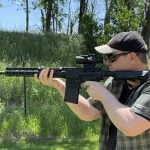One of Beretta’s classic pistol lines is the classic 80-Series, otherwise known collectively as the Beretta Cheetah, introduced in the 1970s. While they share the lines of the 90-Series and have a similar method of disassembly, these are blowback-operated pistols chambered in .22LR, .32 ACP, and .380 ACP.
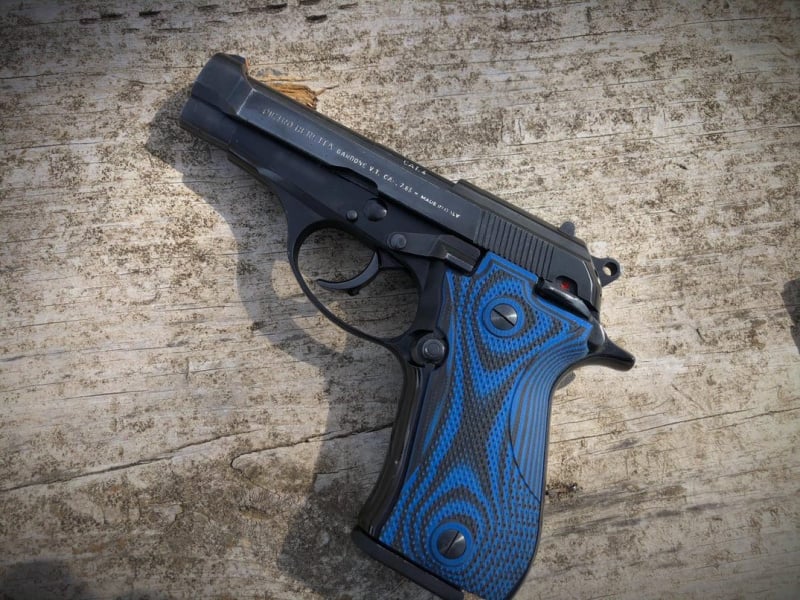
These pistols are still in production in Italy and while they’ve never been as popular as the iconic Model 92, they have served the needs of police officers and armed citizens for nearly fifty years.
The Beretta Cheetah Family
There are several guns in this series, most of which look similar, and all of which have only been sporadically imported over the years. It can be difficult, at a glance, to tell one from another. Let’s go through them.
Beretta 81
The Model 81 is the 1st of this series. It looks like a scaled-down Beretta 92, chambered in .32ACP (which the Europeans called 7.65mm Browning). It feeds from a 12-round, double-column magazine and features an ambidextrous thumb safety. The pistol is double action but can be carried Condition One (cocked and locked). If you wish to carry it with the hammer down, you must carefully lower the hammer manually, as you would with a revolver. Practice this before you try it on a live round and make sure you’re practicing good muzzle discipline!

Like the 92FS, the slide is open-topped and features an integral front sight. The grip frame is made of aluminum and has the same shape as the 92 series, complete with a small beaver tail, but is smaller. Unlike some other European-made compact-blowback pistols, the Cheetah has a push-button magazine release in the usual place. The barrel length is 3.8 inches, and the weight is listed at 24 ounces.
Beretta 82
The Model 82 is a slimmed-down version of the Model 81, with a nine-round, single-column magazine. It is thinner and lighter than the Model 81 but otherwise is very similar.
Beretta 83
The Model 83 is a single-stack Beretta Cheetah variant chambered in .380 ACP. It features a slightly longer, four-inch barrel and feeds from a seven-round magazine.
Beretta 84
The Model 84 is the most commonly-encountered gun in the series. It is similar to the Model 81 except chambered in the .380 ACP cartridge. It comes with a 13-round, double-stack magazine, meaning it carries one extra round in addition to utilizing a larger cartridge.
Like the 81, the 84 is a double-action pistol with an ambidextrous, frame-mounted safety. It can be carried cocked-and-locked or must be manually decocked. The earlier 84B has a rounded trigger guard, whereas the later 84F and FS models have one with a finger rest.
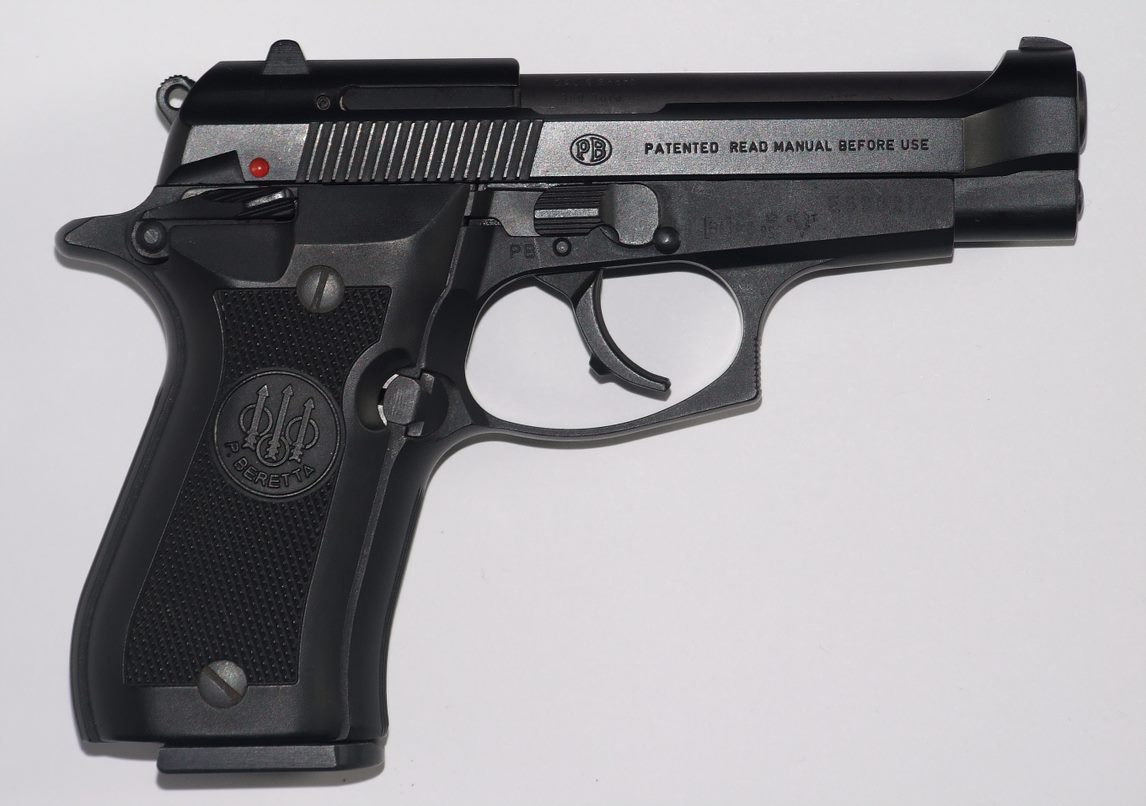
Beretta 85
The Model 85 is similar to the 84, except it features a thinner grip frame and a single-column, eight-round magazine. The barrel length and controls are the same.
Beretta 86
The Model 86 is a unique member of the Beretta Cheetah family, one that is more easily distinguished from the others. Chambered in .380, the Model 86 feeds from the same eight-round magazine as the Model 85. It differs, however, in that it utilizes a tip-up barrel, a feature seen on the smaller Beretta Tomcat and Bobcat pistols. This allows a user to drop a round into the chamber and load the pistol without having to rack the slide.
Beretta 87
The Model 87 is a .22LR pistol that comes in two standard varieties. The standard Cheetah version is simply a .22LR variant of the rest of the Beretta Cheetah series. The Target version is visually distinct, with a longer, 5.9-inch weighted barrel, adjustable sights, and an integral Weaver-style optics rail. It is a very accurate and comparatively expensive rimfire pistol.

Beretta 89
The Model 89 is another high-end target pistol chambered for .22LR. Like the 87 Target, it features a long, heavy barrel that does not reciprocate with the slide. It lacks the integral optics rail and is usually equipped with oversized wooden target grips.
Browning BDA
The Browning Double Action pistol, chambered in .380 ACP, was a variant of the Model 84 made for Browning by Beretta. One key difference between this pistol and the standard Model 84 is the safety. Unlike the rest of the Beretta Cheetah family, the BDA features a slide-mounted safety/decocking lever, similar to the one on the 92FS.
Another difference is the BDA series has a fully-enclosed slide, as opposed to the signature open-topped slide on the Beretta guns. The BDA series had spur hammers, as opposed to the rounded hammers Beretta pistols came equipped with. These pistols were imported from the 70s through the 90s.
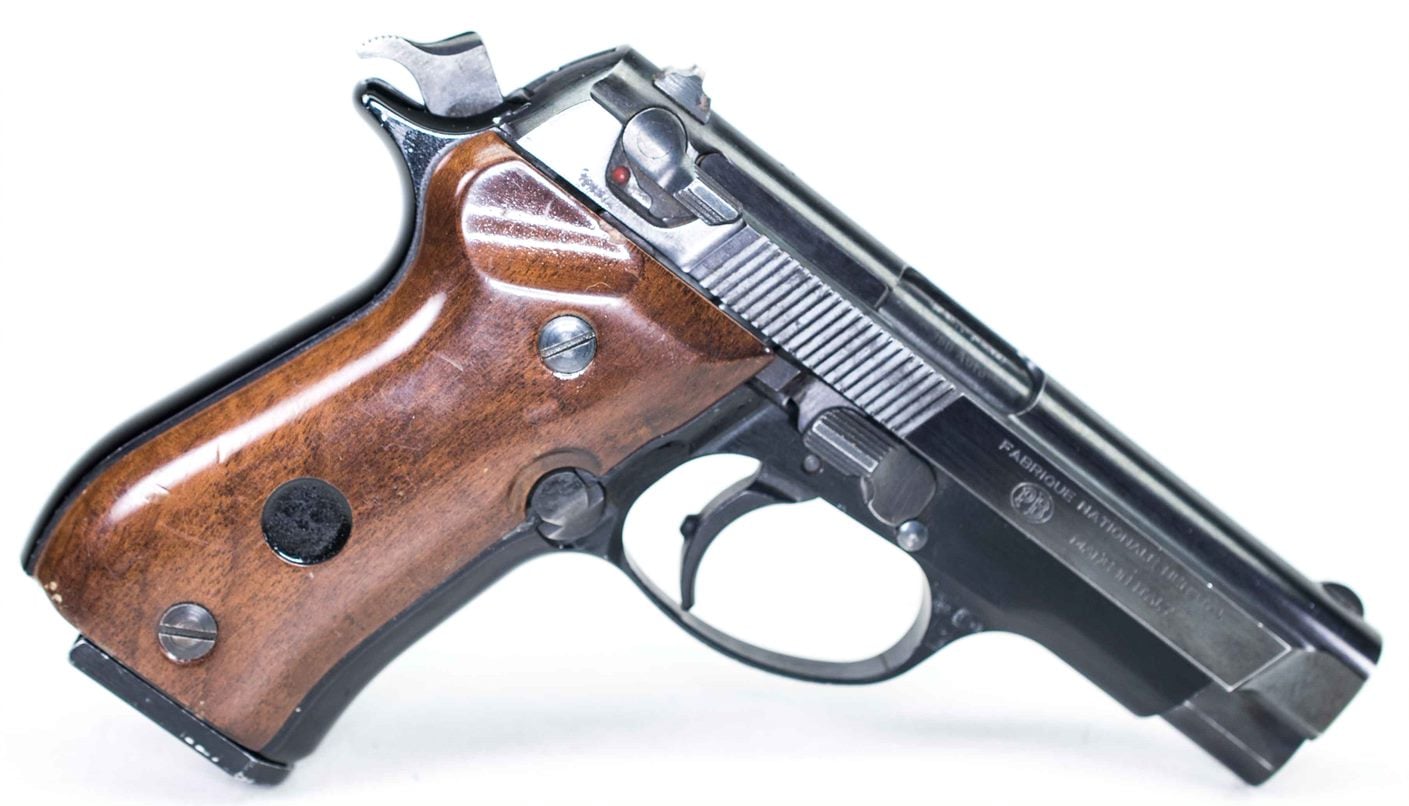
FN 140DA
This pistol was a variant of the Browning BDA produced by Fabrique National Herstal of Belgium, primarily for the European market. It was chambered in .32ACP and was something of a commercial failure, despite being adopted by the Belgian Judicial Police for female officers circa 1980.
Hands-On
I came into possession of a vintage Beretta 81 in .32 ACP several years ago, and between my wife and I, we’ve shot it quite a bit. It’s lightweight, weighing only 26 ounces fully loaded. It has low recoil and is easy to shoot, even for novices. Magazines for the .32 ACP guns can be difficult to find, but through hunting online I was able to acquire several spares.
I made only two modifications to the gun. I replaced the scratched plastic grips with a checkered, blue G10 set from Lok Grips. Available in several colors, these grips are thinner than the factory ones and are much more vigorously textured.
The 2nd modification I made was very slight. I bought a bottle of orange nail polish and painted the front sight so as to make it easier to see. The sights are decent, but are on the small side and are black-on-black. Having the front sight colored makes picking it up that much easier.

We’ve shot hundreds of rounds through this pistol with no issues. It had no issues with any type of .32 ammo I was able to find. The trigger is serviceable and feels very similar to a Beretta 92FS in weight and pull. The safety is easy to flick on and off and can be activated whether the hammer is up or down (though personally, I think having both a long, double-action trigger and a manual safety is redundant). Overall the pistol is lightweight, reliable, and easy to conceal.
Disassembly is straightforward and is nearly identical to the Beretta 92 pistol. It breaks down into five pieces, including the magazine, and can be reassembled in seconds.
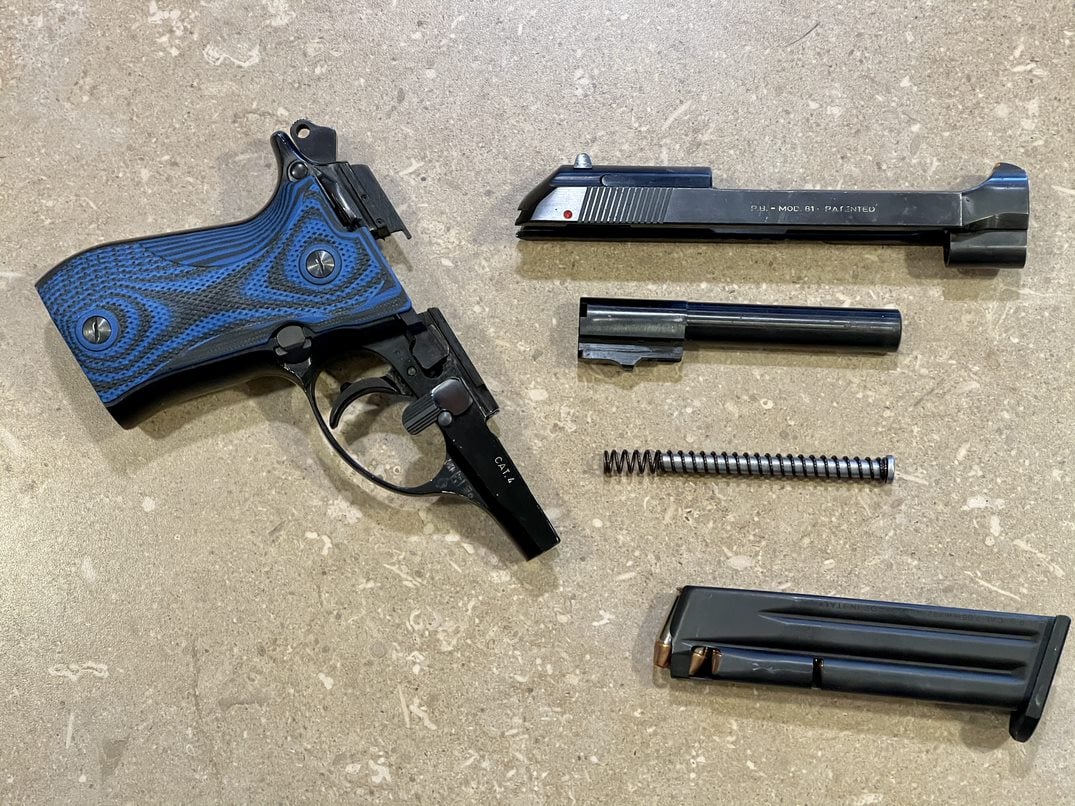
.32 ACP
The biggest downside to the Beretta 81 is the fact that it’s chambered in .32 ACP. .32 is an old handgun round, designed by John Browning and introduced in 1899. (Mr. Browning also created the .380 and .45ACP rounds in conjunction with Colt, hence the name: Automatic Colt Pistol.) In Europe, the cartridge introduced by FN was sold as the 7.65mm Browning Short.
.32 ACP was wildly popular a century ago, and was easily one of the most popular handgun rounds for self-defense. It was also issued to military personnel and police officers around the world (though not commonly in the United States). It has been estimated that the .32ACP was chambered in more handguns than any other cartridge, with FN alone producing at least half a million.
It waned in popularity toward the end of the 20th Century. Many guns chambered in .32 were also available in .380, and that era saw the arrival of compact 9mm, .40, and .45-caliber semiautos on the market. It enjoyed something of a revival around the turn of the century as several very small, modern guns were designed for it.
Its renaissance was brief, however, as within a few years those same very small pistols were being chambered in .380. Only a few .32ACP pistols are available now on the US market, including the North American Arms Guardian, the Kel-Tec P32, the Seecamp, and the Beretta 3032 Tomcat.
Finding ammunition for a .32 pistol was difficult during the shortage of 2020-21, and when we were able to find it, it was often expensive. Even now, expect to pay fifty cents per round for basic full metal jacket ammunition.
Several companies make modern self-defense ammunition for the .32 ACP, but it’s important to keep in mind that it’s still a .32. We’re all aware of the mantra that all handguns suck, but some definitely suck more than others. The .32ACP fires a small, lightweight (60-73-grain) bullet at modest velocities, usually 900-1100 feet per second. It would be the 1st choice of very few shooters.
Conclusion
Despite its drawbacks, the humble .32ACP has been successfully defending people for well over a century. With good accuracy and follow-up shots, it can still get the job done. If you’re a person who, for whatever reason, cannot handle much recoil, a gun like the Beretta 81 might be a viable option, if you can find one.
All in all, I’m quite fond of the little Model 81 and will never part with it. It wouldn’t be my 1st choice for self-defense, but it runs well and is very fun to shoot. It’s a great gun for new shooters who are stepping up to a centerfire pistol but might still be skittish about recoil and noise. If you’re a collector of vintage handguns or simply a fan of Berettas, you should consider adding a member of the venerable Beretta Cheetah family to your collection.


